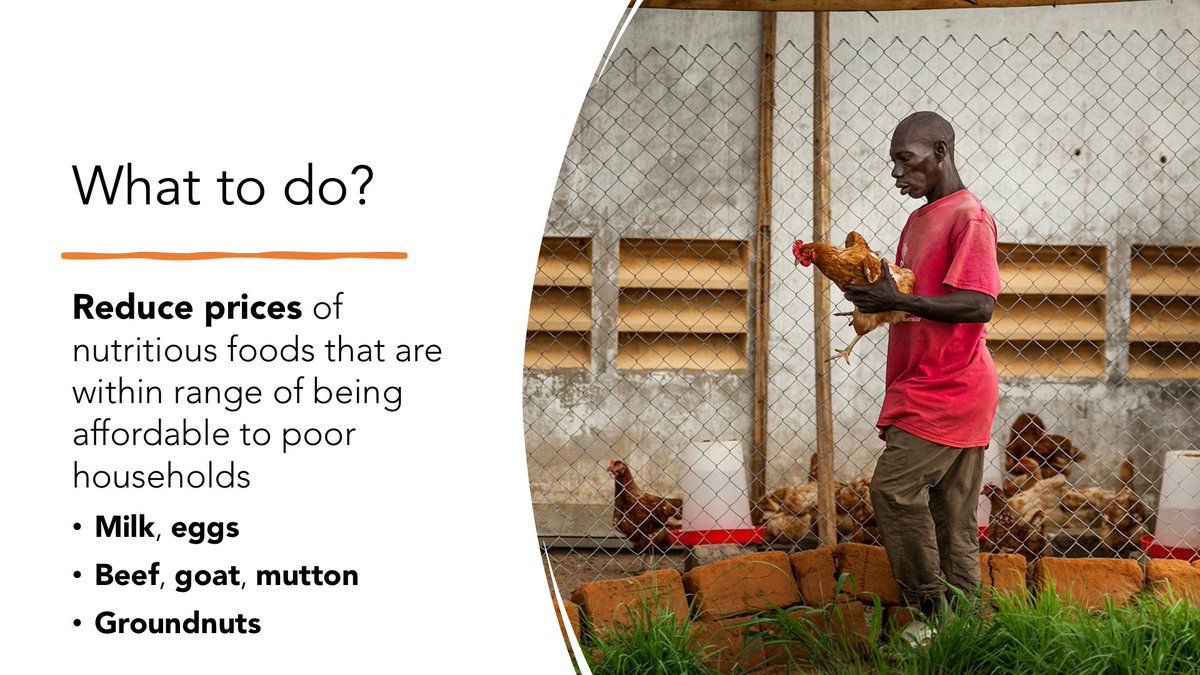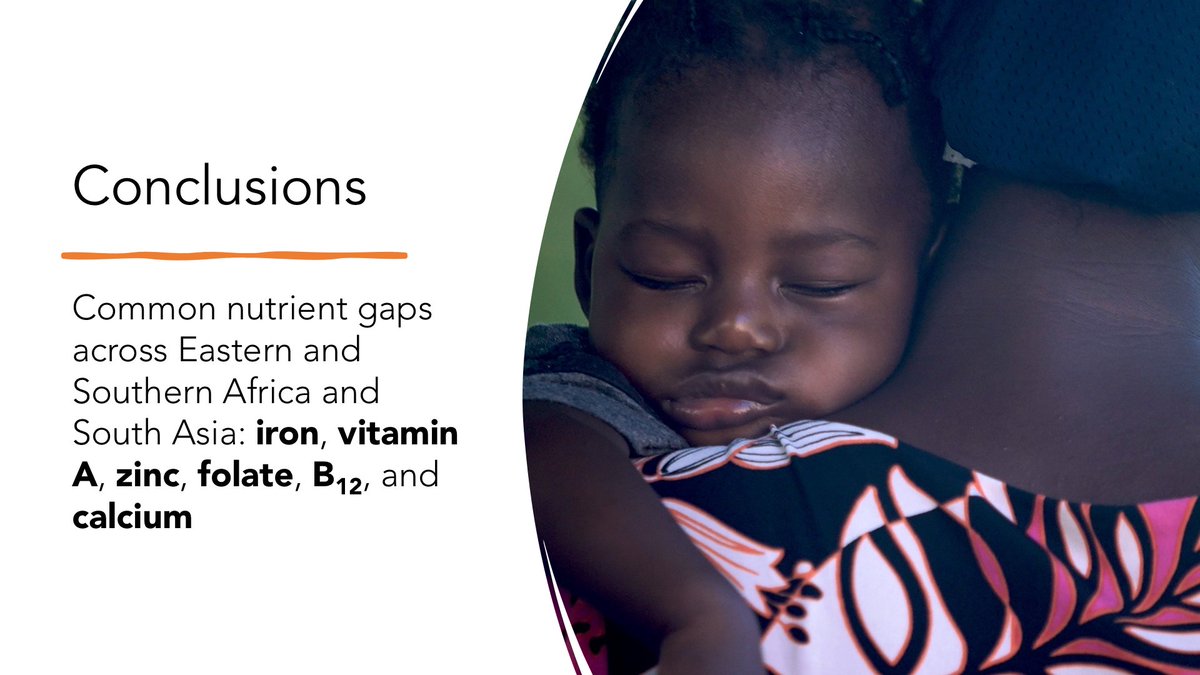
🚀 Now launched!
New supplement by @GAINAlliance & @UNICEF provides evidence-based findings on nutrient gaps & affordability
Read it here 👉🏼 academic.oup.com/nutritionrevie…
Read this thread for the key findings & implications 👇🏼
@UNICEFAfrica @UNICEFEthiopia @UNICEFROSA @UNICEFIndia
New supplement by @GAINAlliance & @UNICEF provides evidence-based findings on nutrient gaps & affordability
Read it here 👉🏼 academic.oup.com/nutritionrevie…
Read this thread for the key findings & implications 👇🏼
@UNICEFAfrica @UNICEFEthiopia @UNICEFROSA @UNICEFIndia

First, check out the related country briefs
Comprehensive Nutrient Gap Assessment (CONGA)
👉🏼 gainhealth.org/resources/repo…
Affordability analysis
👉🏼 gainhealth.org/resources/repo…
Comprehensive Nutrient Gap Assessment (CONGA)
👉🏼 gainhealth.org/resources/repo…
Affordability analysis
👉🏼 gainhealth.org/resources/repo…

I won't bore you with the methods, but there's an entire paper on the CONGA method, if interested
👉🏼 academic.oup.com/nutritionrevie…
👉🏼 academic.oup.com/nutritionrevie…

The methods for the affordability analyses are in the same papers as the results
Eastern and Southern Africa
👉🏼 academic.oup.com/nutritionrevie…
South Asia
👉🏼 academic.oup.com/nutritionrevie…
Eastern and Southern Africa
👉🏼 academic.oup.com/nutritionrevie…
South Asia
👉🏼 academic.oup.com/nutritionrevie…

There are clear nutrient gaps in Eastern and Southern Africa, but most nutrients (except iron and vitamin A) are based on low-certainty evidence
Read the paper here
👉🏼 academic.oup.com/nutritionrevie…
Read the paper here
👉🏼 academic.oup.com/nutritionrevie…

Similar gaps in South Asia (but also vitamin C for some countries), and the evidence certainty is stronger for several nutrients
Read the paper here
👉🏼 academic.oup.com/nutritionrevie…
Read the paper here
👉🏼 academic.oup.com/nutritionrevie…

Animal source foods like liver, small dried fish, beef, and eggs are the best sources of commonly lacking nutrients 

This just shows the breakdown by nutrient and average share of requirements per 100 g portion for South Asian countries
Read the paper here
👉🏼 academic.oup.com/nutritionrevie…
Read the paper here
👉🏼 academic.oup.com/nutritionrevie…

The most nutrient dense foods are also typically more affordable, but add in dark leafy greens and milk as affordable sources of key nutrients in most countries 

The next figures are at the country level, which make it easier to see the most affordable sources of key nutrients in each country
Read the briefs here
👉🏼 gainhealth.org/resources/repo…
Read the briefs here
👉🏼 gainhealth.org/resources/repo…

Note that small fish are also likely affordable sources of key nutrients where available in Bangladesh (although not shown here)
👉🏼 gainhealth.org/resources/repo…
👉🏼 gainhealth.org/resources/repo…

Several affordable nutritious foods in India, but flesh foods are less affordable
👉🏼 gainhealth.org/resources/repo…
👉🏼 gainhealth.org/resources/repo…

However, in most countries, iron and zinc are particularly unaffordable in large enough quantities to meet requirements
Even the most affordable sources (often dark leafy greens for iron and pulses for zinc are unaffordable to many households)
👉🏼 gainhealth.org/resources/repo…
Even the most affordable sources (often dark leafy greens for iron and pulses for zinc are unaffordable to many households)
👉🏼 gainhealth.org/resources/repo…

This is difficult to do and sometimes has trade-offs (eg, may reduce income of poor rural farmers if not properly designed) 

Obvious, but not always clear which households can afford which foods (that's why we did this analysis) 

This has been shown to work in many contexts
It doesn't always increase consumption (sometimes households sell the nutritious foods produced), but it generally has positive impacts
It doesn't always increase consumption (sometimes households sell the nutritious foods produced), but it generally has positive impacts

While it's ideal to obtain nutrients through whole foods, fortification & supplementation play a role because they are affordable sources of key nutrients
Note that biofortification just means crops that are bred to have higher nutrient density (eg, orange-fleshed sweet potato)
Note that biofortification just means crops that are bred to have higher nutrient density (eg, orange-fleshed sweet potato)

Several animal source foods are considered affordable when taking nutrient-density into account
Dark leafy greens are also affordable sources of key nutrients
Dark leafy greens are also affordable sources of key nutrients

But food sources of iron and zinc are not affordable for many households in adequate quantities to meet needs 

Congrats to all coauthors @rycktessman @SaulMorris19 @StellaNordhagen @aashi073 and others not on Twitter
And special thanks to the funders @DutchMFA @gatesfoundation
And special thanks to the funders @DutchMFA @gatesfoundation

@vanvlietphd @ChristinacHicks @rycktessman @StellaNordhagen @wamasters @DrPatrickWebb @aashi073 @AnnaWHerforth @chrisgolden05 @justjody23 @PabloPastos @CP_Stewart @ReinaEngleStone @gatesfoundation @FrancesAKnight @saskiadepee @Dmozaffarian @PhilBakerNZ @waiterich @paigestanley_ag
@ryankatzrosene @ErmiasKebreab @Anne_Mottet @EBourgeois @JoannaBlythman @JZKoehn @kendraabyrd @fatisourfriend @REGENETARIANISM @HanqiL @miriamshindler @TlustyM @KitchenBee @bigfatsurprise @andrewtl @GHGGuru @GrassBased @zinocker @drsplace @Fabiensapiens @NutrReviews @ethanjweiss
@OWC93 @sethi_vani @fr_ajena @KetoCarnivore @ChittendenNate @BoydSwinburn @HallenIDRC @Mark_Sisson @mwbloem @ChrisMasterjohn @IPESfood @MarikaSboros @Michael_Easter @chrisvogliano @ILRI @agrobiodiverse @andrewmente @leilamlarson @DFC_Program @TamarHaspel @skaenzig @MatthewJDalby
• • •
Missing some Tweet in this thread? You can try to
force a refresh















